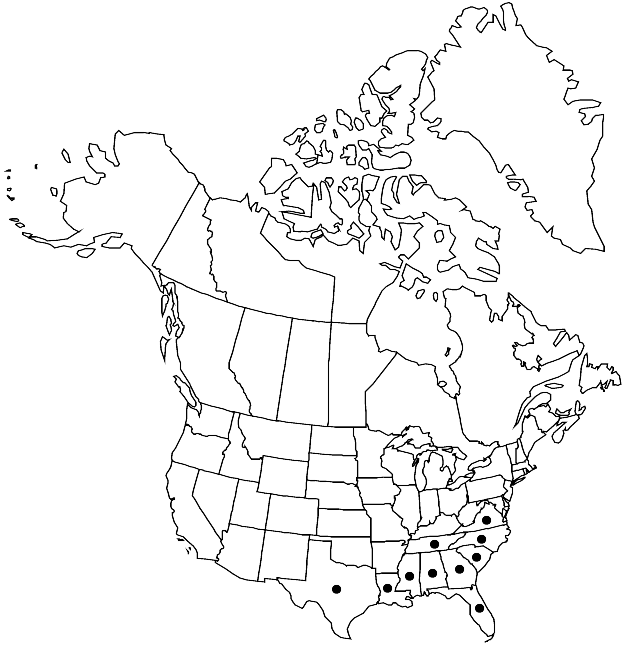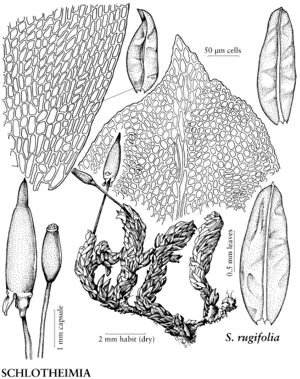Difference between revisions of "Schlotheimia rugifolia"
Sp. Musc. Frond. Suppl. 2(1,2): 150. 1824.
Illustrated
Basionym: Orthotrichum rugifolium Hooker Musci Exot. 2: plate 128. 1819
Treatment appears in FNA Volume 28. Treatment on page 72.
FNA>Volume Importer |
imported>Volume Importer |
||
| Line 54: | Line 54: | ||
|publication year=1824 | |publication year=1824 | ||
|special status=Illustrated | |special status=Illustrated | ||
| − | |source xml=https:// | + | |source xml=https://bibilujan@bitbucket.org/aafc-mbb/fna-data-curation.git/src/bb6b7e3a7de7d3b7888a1ad48c7fd8f5c722d8d6/coarse_grained_fna_xml/V28/V28_109.xml |
|genus=Schlotheimia | |genus=Schlotheimia | ||
|species=Schlotheimia rugifolia | |species=Schlotheimia rugifolia | ||
Revision as of 22:42, 27 May 2020
Plants reddish brown to dark brown. Stems 0.2–0.8 cm. Stem leaves oblong to oblong-ligulate, rugose, 1.4–1.6 mm; margins entire; apex abruptly apiculate; costa short-excurrent; distal laminal cells rounded-quadrate, 5–9 µm. Seta 2.5–4 mm. Capsule 1.7–2.2 mm. Calyptra papillose distally.
Habitat: Logs, trunks of trees frequently above 3 m, branches in tree canopies
Elevation: low elevations
Distribution

Ala., Fla., Ga., La., Miss., N.C., S.C., Tenn., Tex., Va., Mexico, West Indies, Central America, South America.
Discussion
Schlotheimia rugifolia is distinguished by its rugose, abruptly apiculate leaves. Characteristically, the plants have a dark reddish brown color, which is best developed under xeric conditions.
Selected References
None.
Lower Taxa
None.
